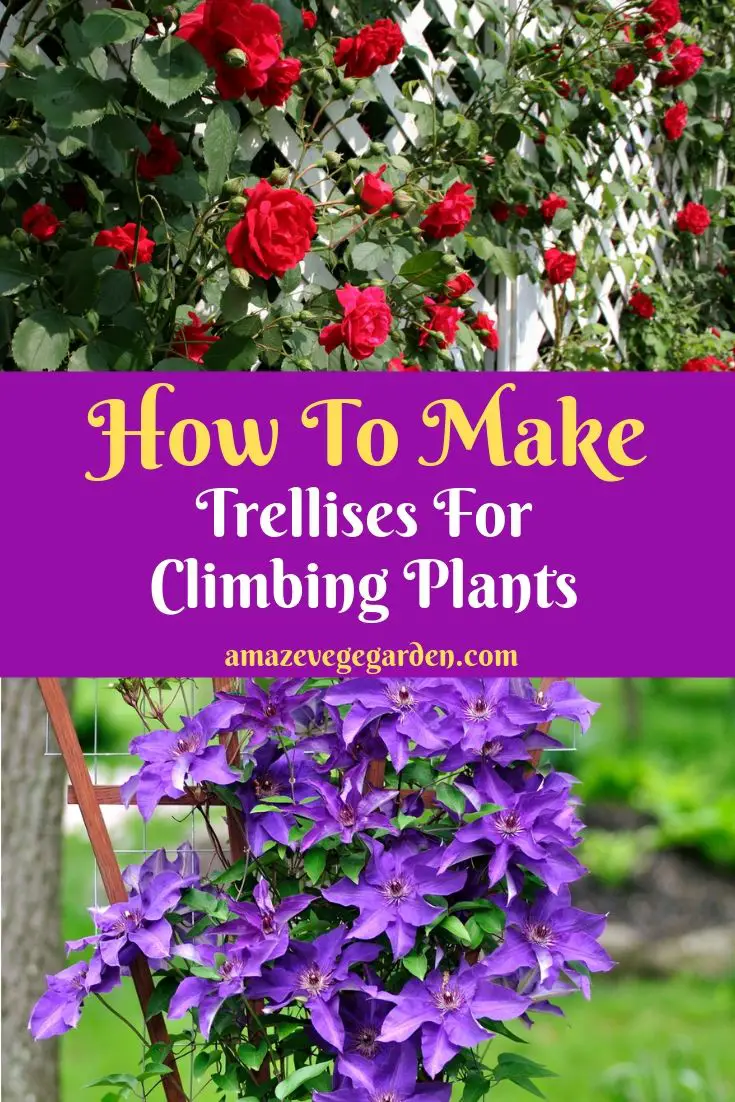We all love the beauty of a climbing plant, with its lush foliage and tendrils cascading over walls or trellises. But have you ever thought about creating your own structure to support these beautiful plants? Have no fear! With just a few simple supplies, you can make an eye-catching trellis for your garden that will be perfect for supporting vigorous climbers like ivy, clematis, and roses. Here’s how!
As any experienced horticulturist knows, there are many ways to create a sturdy trellis for your climbing plants. You could go out and buy yourself one off the shelf but where’s the fun in that? I’m here to show you’ll how it’s done – let’s get crafty and build our own! All you need is some basic materials that you probably already have lying around the house; plus a bit of time and patience as we construct something truly unique.
With my step-by-step guide, I promise that anyone – regardless of their DIY experience – can easily put together an attractive trellis in no time at all. So grab those tools (and maybe even call up a couple of friends) because building this masterpiece is gonna be loads of fun!

What Is A Trellis?
As gardeners, we all know how wonderful it is to add a little extra pizzazz to our outdoor spaces. Taking the time and effort to create something special can be very rewarding. And one way to do just that is with trellises for climbing plants. But what are trellises exactly? Well, they’re structures made of metal or wood that act as supports for climbing plants in your garden. They allow you to use vertical space in an otherwise limited area.
Not only does this make your outdoor areas more attractive, but also makes them look bigger too! Trellis designs come in various shapes and sizes so there’s sure to be one that suits your needs perfectly. So why not take advantage of these practical yet aesthetically pleasing creations today? With their help, your green thumb will certainly have a field day!
Types Of Trellises For Climbing Plants
Now that we know what a trellis is, let’s explore the different types of trellises available for climbing plants. Trellises come in many shapes and sizes to suit any garden or outdoor space. Some are tall and wide while others are short and narrow; some are made from wood, metal, or even plastic! The choice is yours.
The first type of trellis is the classic arbor-style trellis. This style has been around for centuries and it’s easy to see why – its simple design looks beautiful in any garden setting. Arbors can be used to create an entranceway into your yard or simply provide support for climbing flowers and vegetables such as cucumbers and squash. They also make great shade structures when covered with vines like wisteria or clematis!
The second type of trellis is a wall-mounted version which offers more versatility in terms of placement. Wall-mounted trellises can be placed along fences, on walls, or even against house siding for added aesthetic appeal. These types of trellises typically feature horizontal bars at various heights so you can easily adjust them depending on how much vertical height your plant needs to reach its full potential. And because they’re attached directly to a wall structure, they don’t take up too much room in smaller gardens either!
Leaf Tower I
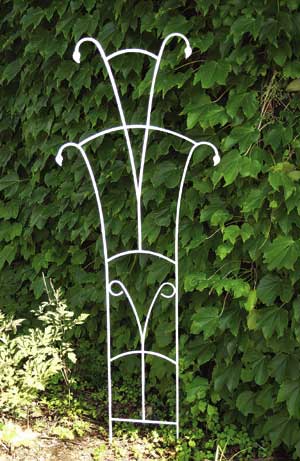
When you need a unique trellis, this Leaf Trellis I fits the bill. It is simple yet delightfully playful and will bring an air of fun to your garden. It is 22″W x 71″H and looks as if the water is squirting from one layer to the next. You will love this trellis!
Orangery Trellis
With the Orangery Trellis, you can establish a privacy fence out in your yard or garden. This charming trellis has multiple arches and lovely wrought iron designs throughout for you to enjoy.
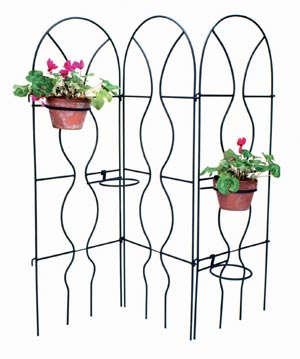
You can also add ring holders and add flower pots, and have climbing vines and plants growing up with beautiful blooms coming out of the pots. The trellis is wonderfully different and will deliver a unique look to your yard.
Palladian Trellis
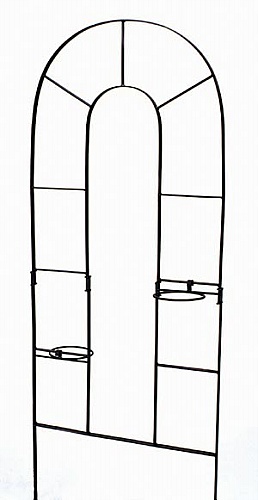
You can use the simple Palladian Trellis with its high arch against the side of your house or as a stand-alone in your garden. You can add pot rings to hang multiple flower pots throughout the trellis and give it a wonderful new look.
This black wrought iron trellis is perfect for places where simplicity is superb.
Quatrefoil Trellis
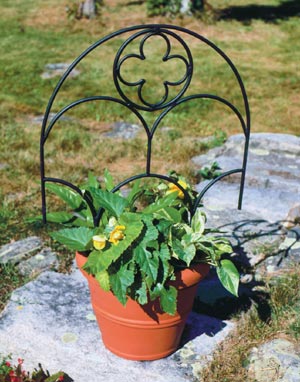
This little Quatrefoil Trellis is perfect for your flower pots and planters. You won’t be afraid to plant those lovely climbing vines and vegetables in pots now that you have a great little trellis for them to climb on.
The small black powder-coated frame, 24″W x 48″H, is sturdy, and you will get several years to use this one.
Square on Squares Trellis I
This exceptional geometric Squares on Squares Trellis I design goes well in a traditional garden and an oriental style garden. Wrought iron and powder coated with juniper, this trellis stands out from all the others.
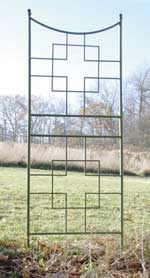
Standing at 86″H x 31.5″W, this trellis is perfect for any climbing vine you have in mind. Designed to be joined together, this trellis can cover a huge wall or area.
Square on Squares Trellis II
Looking for something different, unique, or rare? Well, check out the Square on Squares Trellis II with the squares on squares design with flanges on either side to hang gorgeous floral baskets to the delight of any gardener.
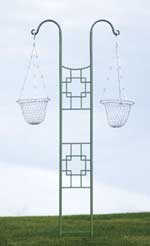
Tall and sleek, 31.5″W x 83.5″, with a juniper powder coat to give this trellis that little extra something to set it off from the rest. Combine that with the ability to hang plants, lights, or party favors from the flanges, and it will fit in with any function or fun.
Cedar Trellis
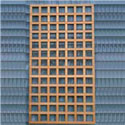
These are natural wood cedar trellis panels. These outdoor garden trellis’ are made of solid red cedar and include an intra-grid construction guaranteed for a lifetime.
The slats are 1 ½” wide, and ¾” thick, with a 4” opening on all wood trellis panels. These gardens and building trellis panels are very easily installed with basic hardware and tools. They are lightweight, so it only takes one person to carry and install them.
All wood trellis’ are sold and come in a natural state. They will require a sealer to be applied BEFORE they are installed to ensure a long lifetime of use. You will find these trellis’ to be of the finest quality and be beyond compare.
Waves Trellis
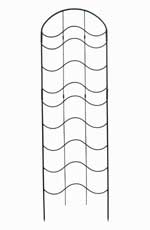
The playful wave pattern throughout this vine trellis is inviting and fun. The Wave Trellis is mounted in the ground and provides stable support as your climbing vines rise from wave to wave. Finished in powder-coated black, this trellis is designed to last through the seasons for many years.
You will love how this looks in your yard and how versatile and easy this trellis is to move and use. Just pull up the 12″ ground stakes, and you will be ready to go to a new location.
Jardiniere Trellis
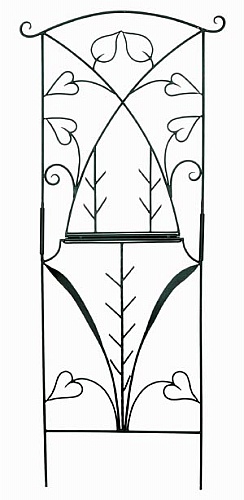
This beautiful Jardiniere Trellis stands out among trellises with floral and heart filigree woven into a charming design. A 27.75″W x 86″H rectangle looks great up against a wall or fence. Black powder-coated to last, you won’t find a more suitable trellis anywhere.
Materials Needed For Building A Trellis
When it comes to trellising climbing plants, you’ll need some basic supplies. I’d recommend gathering everything before you start building so that the project can move smoothly and without interruption.
First off, pick out your wood. You’ll want something strong enough to support the weight of a growing plant but light enough for easy installation. Cedar is an ideal choice since it’s not only lightweight but also naturally resistant to rot and insects. If possible, try to select pieces that are straight with few knots or other imperfections – this will make construction easier overall.
Next, grab some hardware such as screws and eye hooks for hanging the trellis in place. Make sure these items are rated for outdoor use so they won’t rust over time when exposed to rain or snow. Also, be sure to choose ones that match the size and scale of your trellis design; if there’s too much strain on any one piece of hardware then your entire structure could come crashing down!
Finally, don’t forget about tools like a drill, saw, hammer, measuring tape, leveler, and screwdriver (or power drill). These items should already be part of your toolbox but double-check ahead of time just in case!
Planning And Measuring The Trellis
I’m sure many of us have dreamed about having a beautiful garden with trellises full of climbing plants. But, the first step in making that dream come true is to plan and measure your trellis properly!
Before you start buying supplies or assembling anything, make sure you know exactly how large and tall your trellis needs to be. Measure the space where it will go, accounting for any existing structures like walls or fences. The goal here is to create an aesthetically pleasing piece of art that fits perfectly into its environment.
Once you’ve planned out all the measurements, determine what type of materials are best suited for constructing your trellis. You could go with something like wood which has a natural look and feel but can require more maintenance over time. Or perhaps metal would suit you better if you want a modern look and don’t mind spending extra money on higher-quality pieces. That being said, each material option comes with pros and cons so consider them carefully before deciding!
How To Assemble The Trellis
Assembling a trellis is an easy task that can be done quickly and with minimal materials. The first step is to determine the size of your trellis. Measure the area you’d like to cover and decide on a height for the trellis, keeping in mind how much space is needed for any climbing plants you plan to use. Once the dimensions have been determined, it’s time to gather all of your supplies. You’ll need poles or posts for vertical support, horizontal supports such as lattice panels or strips or wire mesh, nails, screws, and/or ties, depending on what type of material you’re using.
Next, assemble the vertical supports by attaching them together using nails or screws at each corner. Make sure they are securely fastened so that no movement occurs when pressure from a climbing plant is applied. To add extra stability, secure cross braces between two adjacent uprights if desired. Then attach the horizontal supports either directly into the uprights or between them using appropriate hardware – again ensuring a stable connection that won’t shift under pressure from growing vines.
Finally, finish off your trellis with decorative touches like finials, caps, or other ornamental pieces if desired. With these steps complete, your trellis will be ready to receive its green tenants.
Securing The Trellis To The Ground Or Wall
Once your trellis is assembled, it’s time to secure it in place. There are two primary ways to do this: either attaching the trellis to a wall or mounting it into the ground. The method you choose will depend on what type of climbing plants you have and where you plan to use them.
To attach the trellis to a wall, use screws or nails strong enough for the weight of the structure and any vines that may be growing on it. Be sure to leave some space between the wall and the trellis so air can circulate around your plants as they grow. Additionally, make sure there is no risk of water damage by ensuring that rainwater won’t accumulate behind or near your trellis.
If embedding your trellis into the ground is more suitable, begin by preparing an area with well-draining soil. Make sure that the spot has sufficient sunlight and access to irrigation sources like underground pipes or hoses. Once ready, drive wooden stakes into each corner at a depth of 8-10 inches using a mallet; then secure those stakes together with metal brackets (such as an L bracket) and screw them firmly in place. Finally, fill in any gaps in the soil surrounding these posts with topsoil before planting anything else nearby.
Here are four tips for helping secure a sturdy trellis:
- Use rust-proof fasteners such as stainless steel or galvanized screws/nails when securing wood pieces together.
- Use heavy-duty anchors when placing your trellis against walls or fences.
- Double-check all connections after installation – look out for loose bolts or nuts.
- Ensure proper drainage away from foundations prior to installing your trellis With your newly installed trellis fixed securely in its designated spot, you’re now ready to start training climbing plants onto it!
Training Climbing Plants On Your Trellis
Training climbing plants on your trellis is a rewarding experience. It’s like creating art with the help of nature! You’ll need to keep an eye on how quickly and in which way the plant grows, so you can guide it in the right direction. If a plant is growing too quickly or in an undesired area, gently nudge it back onto its intended course. To do this, tie loosely around stems using soft materials such as string or twine; any fastening material that isn’t thick enough to damage the stem should work fine.
When training multiple climbers, focus first on one at a time. This will ensure each gets sufficient attention and won’t crowd out other plants vying for space near the top of the trellis. Also, consider giving them some extra support when they reach maturity by tying their stalks together with rope or wire ties. This helps prevent breakage due to wind gusts or heavy fruits and flowers weighing down branches.
As your plants grow up and over your trellis structure, don’t forget to prune occasionally – oftentimes in late winter – to maintain shape and promote new growth from existing buds below those areas being cut away. With patience, care, and regular maintenance – including providing adequate water, food, and airflow – your climbing plants will reward you with years of lush beauty and fragrant goodness! As we move into tips for maintaining your trellis structure…
Tips For Maintaining The Trellis Structure
Once you have installed your trellis and trained the plants to climb up it, there are some important maintenance tips that can help keep your climbing plants healthy. To ensure that they remain strong and vigorous, here are a few key things to remember.
First of all, it is essential to check the trellis structure regularly for signs of wear or damage. Any weakened joints or parts should be repaired as soon as possible before more serious problems occur. It’s also important to inspect any fastenings used to mount the trellis onto walls or fences – these may need replacing after extended periods in order for them not to fail under pressure from windy conditions or heavy foliage.
In addition to this, regular cleaning will help maintain the look and function of the trellis. This can involve simply brushing off dirt with a soft brush, but in cases where mildew has become established, it might require washing down with soapy water followed by rinsing with clean water. If necessary, fungicidal sprays could then be applied afterward for extra protection against disease-causing organisms.
These simple steps should keep your trellises looking good and functioning properly over time, providing an attractive support system for your growing climbers while protecting both plant and structure alike! As such, following these basic guidelines will go a long way toward ensuring successful container gardening with climbing plants and a trellis.
Container Gardening With Climbing Plants And A Trellis
Container gardening with climbing plants and a trellis is an age-old tradition, one that many gardeners of yore would be familiar with. Today’s modern container gardener can easily create a beautiful display by combining the right selection of climbers and structures. With a bit of know-how and some clever planting techniques, you can create an attractive wall of greenery or flowering vines in no time at all.
First off, it’s important to select the right kind of trellises for your climber; they need to provide enough stability while also being lightweight so as not to damage any nearby walls or buildings. A variety of materials are available such as metal wires, lattice panels, wooden posts, bamboo poles, or even plastic mesh netting. When selecting your structure, make sure it has plenty of nooks and crannies for your chosen plant to wrap itself around for support.
Once you’ve picked out your perfect trellis, it’s time to decide on what type of climbing plants will best suit your needs. Many varieties exist from sweet peas to morning glories or clematis – each offering its own unique set of growth requirements and characteristics. You could even opt for something more exotic like kiwi fruit! Just remember when picking out seeds or seedlings that if there isn’t much space between them then they may struggle to climb up the trellis without crowding each other out.
The benefits don’t end there either – growing these beauties vertically means less ground space needed compared to traditional garden beds which make container gardening an ideal choice for those who have limited room outdoors but still want their green thumbs satisfied!
Climbing Plants For Trellises
You may also make trellises out of wrought iron or metal poles. These trellises may sometimes be harder to maintain because climbing plants wrap themselves tightly around the metalwork. As a result, gardeners are left with woody residue after every season.
The best plants to grow on trellises include tomatoes, zucchini, peas, cucumbers, melons, squash, and beans. Non-bush or trellis varieties of these plants will work well on any trellis. Smaller fruit varieties such as acorn or butternut squashes are ideal. If fruits get too big, they may require support such as individual hammocks.
Planting vegetables in the appropriate gardening zones will also help ensure success. A majority of plants found in local nurseries are compatible with the gardening zone. Plant catalogs have tags to inform customers which vegetables grow best and where.
A well-built trellis will last seasons and can grow a wide variety of creeping plants. They make growing plants and vegetables easier and add aesthetic interest to any garden.
Growing Cucumbers and Zucchini on Trellises
Cucumbers and zucchini are climbing plants that many people on trellises are planting. They are easy to grow by getting the appropriate seeds, and direct seed them into your garden where the garden is receiving warm soil and warm weather.
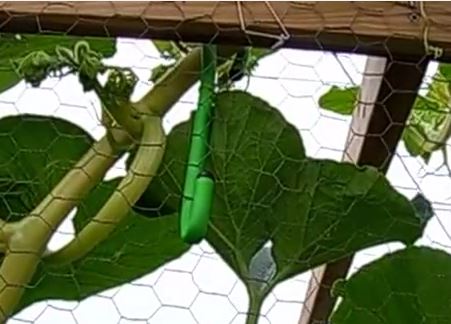
You can’t start them indoors as they need full sun for the majority of the day. For cucumbers and zucchini, the hotter the weather, the better these vegetables like it.
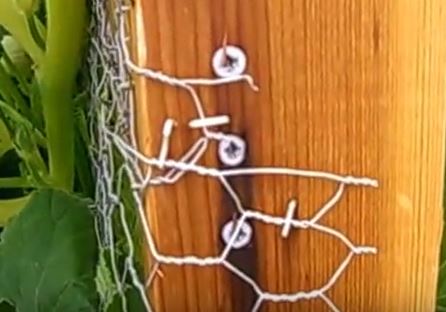
Cucumber will climb up the trellises, and zucchini will spread over the soil. Cucumbers with the Beit Alpha species are super tender, have very thin skin, and are sweet. They are perfect for fresh eating. This will be really pretty and will give you a lot of production.
Other than cucumbers and zucchini, the best plants and vegetables you can grow on trellises include squash, grape, raspberry, and blackberry.
How To Build Grape Vine Trellises
If you have white grapes and purple grapes lying on the ground, which have been propagated for several months, you may want to make a grapevine trellis so that you can put all the grapes in. By doing so, you will be able to enjoy jellies and jams for your meal for years.
Before anything is done, the first thing you need to do is build up some leg bolts. The bolt can be the fundamental structure and system for you to hang all your grapes.
You may set them on a concrete floor and ensure sturdy before hooking them up with the cables. When the arbors are ready, you may put a brace up to make sure they are good and square.
Then you can have the cables hook on this arbor that is being buckled and tightened up. Finally, you can start to transfer all the grapes from the ground and hang them on this newly built grape vine trellis.
Benefits Of Growing Climbing Plants On A Trellis
Growing climbing plants on a trellis can provide many benefits to your garden. Here are some of the top reasons why:
- Trellises provide support for vining plants and make it easier for them to reach their full potential in terms of growth.
- Growing vines on a trellis also help prevent disease spread as they’re not prone to overcrowding, unlike when planted directly into the ground.
- Plus, you can get creative with how you use trellises to add beautiful visual interest to your outdoor space.
- Additionally, growing climbers on a trellis is an efficient way to maximize the use of vertical space in your garden – which means more room for other plantings!
When deciding whether or not to include a trellis in your landscape design plan, there are several factors that should be taken into consideration such as size, height, materials used, and placement within the yard/garden area. With careful research and planning ahead, you’ll find that adding this type of structure will bring numerous rewards in terms of aesthetics and practicality alike!
The Benefits and Uses of the Vineyard Crossarms
There are certain techniques and tools that farmers can use to boost or improve their harvest. One of the most used items these days for grape farming is none other than the vineyard cross arms.
Most farmers would install these cross arms to make removing the used bird netting a lot easier. Bird netting is usually placed to cover or protect the ripe fruits from birds. Because of this, using vineyard cross arms is very important.
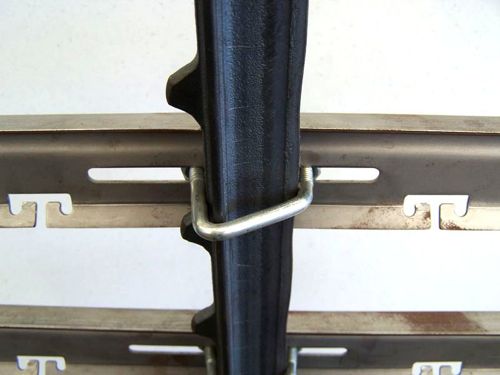
The Benefits of the Crossarms in Grape Farming
Before, most vineyards are attached to different trellises to support the fruits. However, using trellises can sometimes impede or block the needed sunlight of the plant.
This can greatly affect the plant and can also reduce or degrade the quality of the grapes. Nevertheless, with the help of the cross arms, you can provide proper sunlight and other necessities to fruits.
Creative Ideas For Decorating Your Garden With A Trellis
Gardening with a trellis is an excellent way to add beauty and color to your outdoor space. With the right materials and design, you can create a stunning feature that will last for years. Here are some creative ideas for decorating your garden with a trellis:
First off, consider materials such as wood, metal, or plastic lattice panels. Wooden trellises provide an organic look while metal frames offer more durability and strength. Plastic lattice panels come in various colors and shapes to match any style of garden. You can also use bamboo poles which give a warm rustic feel to the area.
To maximize flowering plants’ growth potential, construct several small archways over perennial beds or along pathways for climbing vines like clematis or jasmine. Place them close together so they touch at the top, allowing blooms to cascade down the sides of each trellis. Alternatively, build one large structure over a seating area where climbers have room to spread out their branches far above people’s heads creating shade during hot summer days.
For further eye-catching effects, hang planters filled with flowers from the bottom rungs of each frame using wire hooks or thin chains. A colorful mix of annuals against the backdrop of foliage will make your garden stand out even more! If desired, paint the trellises in bright hues like yellow or red for added vibrancy and energy throughout the year—a great way to bring life into your outdoor sanctuary.
